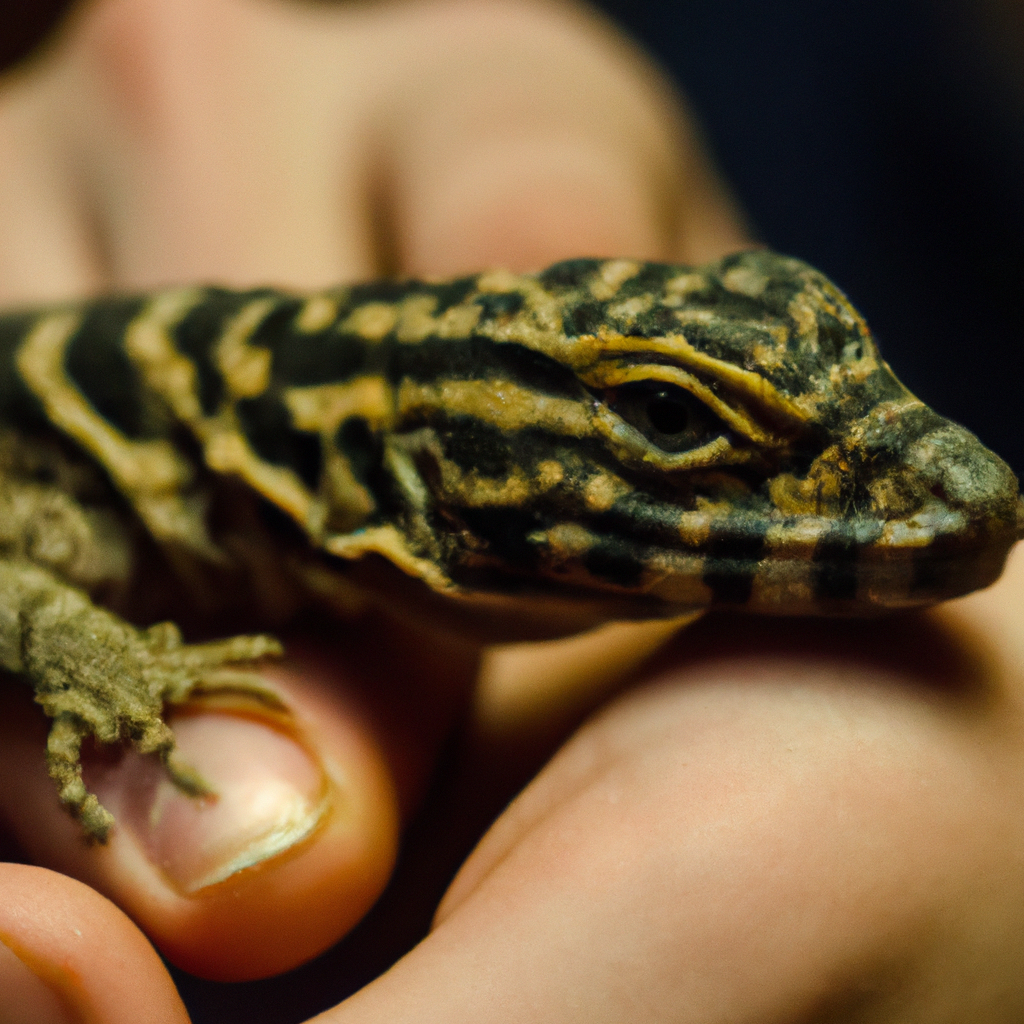Introduction
Caring for a lizard as a beginner can be an exciting and rewarding experience. Lizards are fascinating creatures that make great pets, but they also require specific care to ensure their well-being and longevity. This comprehensive guide will provide you with all the information you need to properly care for your lizard as a beginner.
Before diving into the details of lizard care, it’s important to understand why it is crucial for beginners to learn about proper care. Lizards have unique needs and requirements that must be met in order for them to thrive in captivity. Without the proper knowledge and understanding, it can be easy to make mistakes that could negatively impact your lizard’s health and well-being.
One of the first steps in lizard care is setting up the perfect habitat for your pet. Lizards require a specific type of enclosure that provides them with the right temperature, humidity, and lighting conditions. This section of the guide will walk you through the process of creating an ideal habitat for your lizard, including choosing the right enclosure, substrate, and decorations.
Feeding your lizard is another important aspect of care. Lizards have specific dietary needs that must be met in order for them to stay healthy. This section will provide you with information on what to feed your lizard, how often to feed them, and any supplements they may require.
Handling your lizard properly is also crucial for their well-being. Lizards can be delicate creatures, and improper handling can cause stress or injury. This section will provide you with dos and don’ts of handling your lizard, as well as tips on how to build trust and bond with your pet.
Maintaining the right temperature and humidity levels in your lizard’s habitat is essential for their health. This section will provide you with information on how to monitor and regulate these factors to ensure your lizard’s comfort and well-being.
In addition to these topics, this guide will also cover common health issues in lizards and how to prevent them, as well as general care guidelines for beginner lizard owners. Finally, a frequently asked questions section will address any additional concerns or queries you may have.
By following the information and guidance provided in this comprehensive guide, you will be well-equipped to care for your lizard as a beginner. Ensuring the well-being and longevity of your pet lizard is a rewarding responsibility that will bring you joy and fulfillment for years to come.
Why Lizard Care is Important for Beginners
Proper lizard care is crucial for beginners to ensure the well-being and longevity of their pet reptiles. Lizards have specific needs and requirements that must be met in order for them to thrive in captivity. Neglecting these needs can lead to stress, illness, and even death for your lizard.
One of the main reasons why lizard care is important for beginners is to provide a suitable habitat for your pet. Lizards require a specific type of enclosure that mimics their natural environment. This includes providing the right temperature and humidity levels, as well as appropriate lighting and substrate. Without a proper habitat setup, your lizard may become stressed and may not be able to regulate its body temperature effectively.
Feeding is another crucial aspect of lizard care. Different species of lizards have different dietary requirements, so it is important to research and provide the appropriate diet for your specific lizard. Some lizards are herbivores, while others are carnivores or omnivores. It is important to provide a varied and balanced diet to ensure that your lizard receives all the necessary nutrients for optimal health.
Handling your lizard correctly is also important for its well-being. Improper handling can cause stress and injury to your lizard. It is important to learn the proper techniques for handling your specific species of lizard and to approach them calmly and gently. Regular handling can help your lizard become more comfortable with human interaction and can also help you monitor its health and behavior.
Maintaining the right temperature and humidity levels is crucial for the health of your lizard. Lizards are ectothermic, which means they rely on external heat sources to regulate their body temperature. It is important to provide a temperature gradient within the enclosure, allowing your lizard to move between warmer and cooler areas as needed. Additionally, maintaining the proper humidity levels is important for lizards that require higher humidity, as it helps with shedding and overall hydration.
By understanding and implementing proper lizard care, beginners can ensure the well-being and longevity of their pet reptiles. It is important to research and educate yourself on the specific needs of your lizard species and to provide a suitable habitat, appropriate diet, and proper handling techniques. Regular monitoring of your lizard’s health and behavior is also important to catch any potential issues early on. With proper care, your lizard can live a happy and healthy life in captivity.
Setting Up the Perfect Habitat for Your Lizard
Setting up the perfect habitat for your lizard is crucial for its overall health and well-being. Lizards are ectothermic animals, which means they rely on their environment to regulate their body temperature. Therefore, creating a suitable habitat that mimics their natural environment is essential.
The first step in setting up a lizard habitat is choosing the right enclosure. The size of the enclosure will depend on the species of lizard you have. It should be spacious enough for your lizard to move around comfortably. Additionally, it should have a secure lid or cover to prevent any escapes.
Next, you’ll need to consider the substrate or bedding for the enclosure. This will depend on the type of lizard you have, as different species have different substrate preferences. Some common substrates include reptile carpet, newspaper, or even sand for certain desert-dwelling lizards. It’s important to research the specific needs of your lizard species to ensure you choose the appropriate substrate.
Creating a suitable temperature gradient is also crucial for your lizard’s habitat. Lizards require a basking spot where they can raise their body temperature, as well as cooler areas where they can retreat to regulate their temperature. This can be achieved by using heat lamps or heat pads in specific areas of the enclosure. It’s important to monitor the temperature regularly to ensure it remains within the appropriate range for your lizard species.
Humidity is another important factor to consider when setting up a lizard habitat. Some lizard species require higher humidity levels, while others prefer drier environments. Research the specific humidity requirements of your lizard species and provide a suitable humidity level by misting the enclosure or using a humidifier if necessary.
Lastly, don’t forget to include hiding spots and decorations in the enclosure. Lizards need places to hide and feel secure. You can use rocks, branches, or artificial plants to create a natural-looking environment for your lizard.
By following these guidelines and doing thorough research on your specific lizard species, you can create a perfect habitat that meets all the needs of your pet lizard. Remember to regularly clean and maintain the enclosure to ensure a healthy and comfortable living environment for your lizard.
Feeding Your Lizard: What You Need to Know
Feeding your lizard is a crucial aspect of their care, as it directly impacts their health and well-being. As a beginner, it’s important to understand the dietary needs of your lizard and provide them with a balanced and nutritious diet.
1. Understanding the Diet: Lizards have different dietary requirements depending on their species. Some lizards are herbivores, while others are carnivores or omnivores. Research the specific dietary needs of your lizard species to ensure you are providing them with the right food.
2. Commercial Diets: Many pet stores offer commercial lizard diets that are formulated to meet the nutritional needs of different lizard species. These diets often come in the form of pellets or powders that can be mixed with water or other ingredients. However, it’s important to supplement these diets with fresh fruits, vegetables, and live insects to provide a varied diet.
3. Live Prey: Most lizards require live prey as part of their diet. This can include insects like crickets, mealworms, and waxworms. It’s important to provide a variety of prey to ensure your lizard receives a balanced diet. You can also dust the prey with calcium and vitamin supplements to ensure your lizard gets all the necessary nutrients.
4. Feeding Schedule: Lizards have different feeding schedules depending on their age and species. Some lizards may require daily feedings, while others may only need to be fed a few times a week. It’s important to establish a feeding schedule and stick to it to ensure your lizard gets the right amount of food.
5. Water: Lizards also need access to fresh water at all times. Provide a shallow dish of water in their enclosure that is large enough for them to soak in if needed. Make sure to clean and refill the water dish regularly to prevent bacteria growth.
Remember, it’s important to monitor your lizard’s weight and overall health to ensure they are getting the right amount of food. If you notice any changes in their appetite or behavior, consult a veterinarian who specializes in reptile care.
By following these feeding guidelines, you can ensure that your lizard receives a balanced and nutritious diet, promoting their overall health and longevity.
Handling Your Lizard: Dos and Don’ts
Handling your lizard can be a rewarding experience, but it’s important to approach it with caution and respect for your pet’s well-being. Here are some dos and don’ts to keep in mind when handling your lizard as a beginner:
Dos:
1. Do approach your lizard calmly and gently. Sudden movements or loud noises can startle them, so it’s best to approach them slowly and quietly.
2. Do support your lizard’s body properly. When picking up your lizard, make sure to support their body and avoid grabbing them by the tail, as this can cause injury.
3. Do wash your hands before and after handling your lizard. This helps to prevent the spread of bacteria and potential illness to your pet.
Don’ts:
1. Don’t handle your lizard too frequently. While it’s important to socialize and bond with your pet, overhandling can cause stress and discomfort for your lizard.
2. Don’t force your lizard to be handled if they are showing signs of stress or aggression. It’s important to respect your lizard’s boundaries and give them space when needed.
3. Don’t handle your lizard if you are feeling unwell. If you are sick or have open wounds, it’s best to avoid handling your lizard to prevent the spread of illness or infection.
By following these dos and don’ts, you can ensure that handling your lizard is a positive experience for both you and your pet. Remember to always observe your lizard’s body language and behavior to gauge their comfort level, and never hesitate to seek guidance from a reptile veterinarian or experienced lizard owner if you have any concerns about handling or caring for your petץ
Maintaining the Right Temperature and Humidity for Your Lizard
Maintaining the right temperature and humidity levels is crucial for the health and well-being of your pet lizard. Different species of lizards have different temperature and humidity requirements, so it’s important to research your specific lizard’s needs before setting up their habitat.
Temperature: Most lizards require a basking spot with a temperature range of 90-100°F during the day, and a cooler area with a temperature range of 75-85°F. You can achieve this by using a heat lamp or ceramic heater for the basking spot, and a cooler area on the opposite side of the enclosure. It’s important to monitor the temperature regularly with a thermometer to ensure it stays within the appropriate range.
Humidity: The humidity level in your lizard’s habitat should also be monitored and maintained. Some lizards require high humidity levels, while others require lower levels. You can increase humidity by misting the enclosure with water, providing a water dish, or using a humidifier. It’s important to avoid over-misting, as this can lead to respiratory issues for your lizard.
It’s also important to provide a gradient of humidity levels within the enclosure, with a drier area and a more humid area. This allows your lizard to regulate their own humidity levels by moving between the different areas.
In addition to monitoring temperature and humidity levels, it’s important to provide a proper lighting schedule for your lizard. Most lizards require UVB lighting to help them metabolize calcium and maintain healthy bones. This lighting should be on for 10-12 hours a day, and replaced every 6-12 months.
By properly maintaining the temperature, humidity, and lighting in your lizard’s habitat, you can ensure their health and well-being. Regular monitoring and adjustments may be necessary to ensure these levels stay within the appropriate range for your specific lizard species.
Common Health Issues in Lizards and How to Prevent Them
Taking care of a lizard involves not only providing the right habitat and feeding it properly but also being aware of common health issues that can affect these reptiles. By understanding these issues and taking preventive measures, you can ensure the well-being and longevity of your pet lizard.
One common health issue in lizards is metabolic bone disease (MBD). This condition occurs when a lizard’s diet lacks essential nutrients like calcium and vitamin D3, leading to weak bones and deformities. To prevent MBD, it is crucial to provide a balanced diet that includes calcium-rich foods such as calcium dusted insects and leafy greens. Additionally, providing access to UVB lighting is essential for lizards to synthesize vitamin D3.
Another health concern for lizards is respiratory infections. These infections can occur due to poor husbandry practices, such as inadequate temperature and humidity levels or improper ventilation in the enclosure. To prevent respiratory infections, it is important to maintain the correct temperature and humidity levels in the lizard’s habitat. Regularly cleaning the enclosure and providing proper ventilation can also help prevent these infections.
Parasites are another common health issue in lizards. Internal parasites, such as worms, can affect the digestive system and overall health of the lizard. Regular fecal examinations by a veterinarian can help detect and treat these parasites. Additionally, maintaining a clean enclosure and providing a healthy diet can help prevent parasite infestations.
Skin problems, such as shedding issues and skin infections, can also occur in lizards. Proper humidity levels and providing a moist hide for the lizard during shedding can help facilitate the shedding process. Regularly inspecting the lizard’s skin for any signs of infection, such as redness or swelling, can help identify and treat skin issues early on.
It is important to note that if you notice any signs of illness or abnormal behavior in your lizard, it is best to consult a veterinarian who specializes in reptile care. They can provide a proper diagnosis and recommend appropriate treatment options.
By being aware of common health issues in lizards and taking preventive measures, you can ensure that your pet lizard remains healthy and happy. Regularly monitoring their behavior, providing a balanced diet, maintaining the right habitat conditions, and seeking veterinary care when needed are all essential for the well-being and longevity of your pet lizard.
General Care Guidelines for Beginner Lizard Owners
Taking care of a lizard as a beginner can be an exciting and rewarding experience. However, it is important to understand and follow some general care guidelines to ensure the well-being and longevity of your pet lizard. Here are some essential tips for beginner lizard owners:
1. Research and choose the right lizard species: Different lizard species have different care requirements. Before getting a lizard, research and choose a species that is suitable for beginners and matches your lifestyle and preferences.
2. Provide a suitable habitat: Create a comfortable and safe habitat for your lizard. This includes providing an appropriately sized enclosure with proper ventilation, substrate, hiding spots, and climbing structures. The habitat should mimic the lizard’s natural environment as closely as possible.
3. Maintain proper temperature and humidity: Lizards are ectothermic, which means they rely on external heat sources to regulate their body temperature. Use a heat lamp or heating pad to create a temperature gradient in the enclosure, with a warm side and a cooler side. Additionally, monitor and maintain the humidity levels required for your specific lizard species.
4. Feed a balanced diet: Lizards have specific dietary needs, so it is important to provide them with a balanced and varied diet. Research the dietary requirements of your lizard species and offer a combination of live insects, fruits, vegetables, and commercially available lizard food. Dust the insects with calcium and vitamin supplements to ensure proper nutrition.
5. Handle with care: While some lizards can be handled, it is important to handle them gently and properly. Avoid grabbing or squeezing the lizard, as this can cause stress or injury. Allow the lizard to crawl onto your hand and support its body to prevent it from falling or jumping.
6. Regular veterinary check-ups: Schedule regular check-ups with a reptile veterinarian to ensure your lizard’s health and well-being. They can provide guidance on proper care, detect any potential health issues early on, and administer necessary vaccinations or treatments.
7. Observe and monitor behavior: Pay attention to your lizard’s behavior and appearance. Look for any signs of illness, such as loss of appetite, lethargy, abnormal shedding, or changes in stool. Promptly address any health concerns by consulting a reptile veterinarian.
By following these general care guidelines, beginner lizard owners can provide a suitable and nurturing environment for their pet lizards. Remember, proper care and attention are essential for the well-being and longevity of your lizard.
Frequently Asked Questions About Lizard Care for Beginners
In this section, we will address some of the most commonly asked questions about lizard care for beginners. These questions cover a range of topics and provide additional guidance and clarification for new lizard owners.
1. What type of lizard is best for beginners?
There are several lizard species that are considered suitable for beginners, such as leopard geckos, bearded dragons, and crested geckos. These species are generally docile, easy to handle, and have relatively simple care requirements.
2. How often should I feed my lizard?
The frequency of feeding will depend on the age and species of your lizard. As a general guideline, most lizards should be fed every 1-2 days, while younger lizards may require daily feedings. It’s important to provide a balanced diet that includes a variety of insects, fruits, and vegetables.
3. How do I handle my lizard safely?
When handling your lizard, it’s important to approach them calmly and gently. Support their body with both hands and avoid grabbing or squeezing them. It’s also important to wash your hands before and after handling to prevent the spread of bacteria.
4. What temperature and humidity levels are ideal for my lizard?
The ideal temperature and humidity levels will vary depending on the species of lizard you have. It’s important to research the specific requirements for your lizard and provide a suitable habitat with the correct temperature gradient and humidity levels.
5. How can I prevent common health issues in lizards?
To prevent common health issues in lizards, it’s important to provide a clean and well-maintained habitat, offer a balanced diet, and ensure proper temperature and humidity levels. Regular veterinary check-ups and observation of your lizard’s behavior can also help detect any potential health issues early on.
6. How long do lizards typically live?
The lifespan of a lizard can vary depending on the species and care provided. On average, lizards can live anywhere from 5 to 20 years, with some species living even longer. Providing proper care and a suitable environment can help ensure a longer lifespan for your pet lizard.
By addressing these frequently asked questions, beginner lizard owners can gain a better understanding of the key aspects of lizard care and feel more confident in their ability to provide a happy and healthy life for their pet. Remember, always consult reliable sources and seek professional advice when needed to ensure the best care for your lizard.
Conclusion: Ensuring the Well-being and Longevity of Your Pet Lizard
In conclusion, proper care for your pet lizard is essential to ensure its well-being and longevity. As a beginner lizard owner, it’s important to understand the specific needs of your lizard species and provide a suitable habitat, diet, and overall care routine.
By following the tips and guidelines outlined in this comprehensive guide, you can create the perfect environment for your lizard to thrive. From setting up the ideal habitat to understanding the importance of maintaining the right temperature and humidity, each aspect of care plays a crucial role in your lizard’s overall health.
Feeding your lizard a balanced diet and handling it properly are also key factors in its well-being. By learning about the specific dietary requirements of your lizard species and following the dos and don’ts of handling, you can ensure that your lizard remains healthy and happy.
Additionally, being aware of common health issues in lizards and taking preventive measures can help you avoid potential problems and keep your pet in good condition. Regular veterinary check-ups and proper hygiene practices are also important for maintaining your lizard’s health.
As a beginner lizard owner, it’s natural to have questions and uncertainties about caring for your pet. The frequently asked questions section of this guide aims to address some of the common concerns and provide further clarity on lizard care.
Ultimately, by following the general care guidelines and being attentive to your lizard’s needs, you can create a fulfilling and enriching experience for both you and your pet. With the right knowledge and dedication, you can ensure that your pet lizard lives a long and healthy life under your care.





https://t.me/s/Top_BestCasino/124